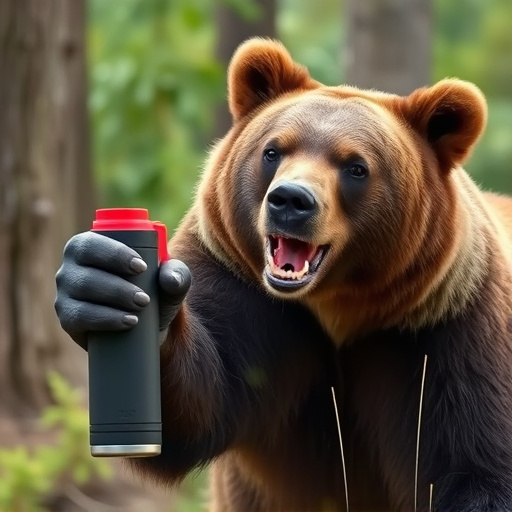Bear pepper spray is a vital safety measure against aggressive bears, but travelers must adhere to TSA restrictions as aerosol forms are prohibited in carry-on luggage due to potential weaponization. Containers should not exceed 3.4 ounces (100ml) and fit in a quart-sized clear plastic bag. Understanding these rules, along with proper training and strategic deployment, ensures the spray remains effective during bear encounters while respecting travel safety guidelines.
“Bearing the brunt of a bear encounter can be terrifying. Luckily, bear pepper spray offers a powerful defense mechanism. This article unravels the efficacy of bear pepper spray, delving into its composition and how it works against aggressive bears. With a focus on maximizing stopping power, we provide essential tips for effective deployment. Additionally, we explore TSA regulations on bear pepper spray, ensuring travelers are informed before venturing into bear country. Stay safe and prepared with these crucial insights.”
- Understanding Bear Spray: Its Composition and Efficacy
- TSA Regulations on Bear Pepper Spray: What You Need to Know
- Maximizing Stopping Power: Tips for Effective Defense
Understanding Bear Spray: Its Composition and Efficacy
Bear spray, also known as bear pepper spray, is a specialized defense mechanism designed to deter and protect against aggressive bears. Unlike traditional pepper spray used for human self-defense, bear spray is formulated with a higher concentration of capsaicin, the active ingredient responsible for its spicy sensation. This potent compound is derived from chili peppers and is known to cause temporary blindness, coughing, and severe irritation in bear’s eyes and nasal passages.
When used properly, bear pepper spray can provide crucial seconds to escape or gather allies, significantly increasing survival chances during encounters with bears. However, it’s essential to understand the TSA (Transportation Security Administration) restrictions on bear spray for travel. Due to its potency and potential as a weapon, aerosol bear spray is not permitted in carry-on luggage but can be transported in checked baggage. Always check current regulations before packing bear spray for travel, ensuring compliance with local and federal guidelines to maximize its effectiveness as a safety measure.
TSA Regulations on Bear Pepper Spray: What You Need to Know
The Transportation Security Administration (TSA) has specific regulations regarding bear pepper spray, which is a popular self-defense option for hikers and outdoor enthusiasts. These rules are in place to ensure safety during air travel while accommodating the needs of those who require such sprays for personal protection. Under TSA guidelines, bear pepper spray is considered a liquid and is subject to size restrictions on carry-on luggage. Passengers can carry only 3.4 ounces (100ml) or less per container, and these must fit comfortably in a quart-sized clear plastic bag.
Travelers should be aware that any excess bear pepper spray will not be allowed aboard flights. This includes larger containers purchased for non-travel purposes. It’s crucial to check the TSA website or contact their support for updates on restrictions, as regulations can change. Understanding these rules is essential for responsible travel and ensuring your safety while enjoying outdoor activities in areas known for bear populations.
Maximizing Stopping Power: Tips for Effective Defense
Maximizing the stopping power of bear pepper spray is crucial for effective defense in encounters with these powerful animals. One key tip is to ensure proper training and understanding of how to deploy the spray correctly. Timing is critical; aiming directly at the bear’s face or eyes can significantly reduce its reaction time. Additionally, keeping a safe distance and using the spray as a last resort can further enhance its effectiveness.
When it comes to choosing the right bear pepper spray, consider factors like concentration (measured in capicity), range, and TSA restrictions for travel. Always check current regulations, especially when planning outdoor adventures in bear country. Using a spray with a higher concentration (e.g., 20% capsicum) can provide better stopping power, but ensure it complies with aviation safety guidelines to avoid issues during flights.
Bear pepper spray can be a powerful defense tool when facing potential bear encounters, but understanding its composition and maximizing its stopping power is key. Knowing the TSA regulations on bear pepper spray ensures you’re prepared while traveling. By following tips for effective use, you can enhance your chances of deterring a bear attack, making it a valuable addition to your outdoor safety kit. Remember, proper knowledge and preparation are essential when venturing into bear country.
